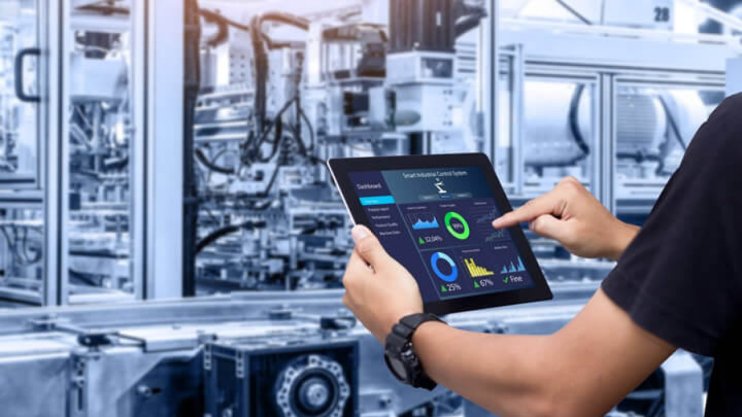
6 Technology-driven trends that will change business strategy

Last year Gartner’ published ‘Top Strategic Technology Trends for 2021’ as an e-book to highlight those trends that are set to drive significant disruption and opportunity over the next five to 10 years. Nearly half-way into 2021 and many of the trends identified in the report are as pertinent now as they were then, with some trends even accelerating in response to the changing tides of our behaviours. Here we summarise the six technology-driven trends that will change how businesses and business leaders think about their strategy in the coming years:
The Internet of Behaviours (IoB)
The collection of data about ‘real world’ human activities, and the use of that data to drive specific ‘real world’ human behaviours, is called the Internet of Behaviour (IoB). As organizations improve the amount of data that they capture, for example about their employees, and improve how they combine data from different sources, the IoB will continue to affect how organizations interact with people.
With the Internet of Things on track to reach 50 billion sensors, more data about individual human behaviours is being captured than ever before. According to Gartner, an increase in what the analysts call the “digital dust” data of daily life will increasingly influence those behaviours through feedback loops.
The risk of course is of falling into a dystopian nightmare where every behaviour is tracked, monitored and analysed. Already the IoB can draw from commercial data, Government data, social media, facial recognition and location tracking. These trends will only accelerate as the sophistication of the technology and data keeps growing.
The ethical question is where to draw the line? What if the same wearables that health insurance companies use to track physical activities to reduce premiums were also used to monitor grocery purchases? Too many unhealthy items could increase premiums. That might bring more efficiency to the market for health insurance, but at what price to individual sovereignty? The IoB is coming – and so are its challenges.
Hyper Automation
Hyper-automation is one of the biggest trends in strategic technology. Hyper-automation is the idea that anything that can be automated should be automated. The drive toward hyper-automation arises from cumbersome legacy business processes creating expensive and entrenched issues for organizations and creating limitations of growth, agility and productivity. Hyper automation seeks to replace these processes with full automation.
Hyper automation will become a new way of working that will change enterprises. Those enterprises that remain supported by a patchwork of technologies that are not lean, optimized, connected, clean, or explicit will start to fall behind in a world where the acceleration of digital business transformation requires efficiency, speed, and democratization. Enterprises that are not able to focus on efficiency, efficacy, and business agility will quickly be left behind.
Artificial Intelligence Engineering
Technologists predict that for the artificial intelligence revolution to fully take place, it needs to become much easier for enterprises of all sized to ‘plug in’ to an intuitive user interface, much like they might do when building applications for the Internet.
Most enterprises struggle with artificial intelligence projects when presented with issues such as maintainability, scalability, and governance. Gartner says that ‘AI engineering’ offers enterprises a pathway to solving this problem, by making AI a part of the DevOps process rather than a set of specialized and isolated projects. According to analysis, a robust AI engineering strategy will facilitate the performance, scalability and and reliability of AI models to enable better AI investments.
Anywhere Operations
This trend became more evident during the Covid-19 pandemic as our patterns of work changed dramatically. Gartner suggests that an ‘anywhere operations’ model will become vital for businesses to emerge successfully from Covid-19.
At its core, an ‘anywhere operations’ operating model allows for business to be accessed, delivered and enabled anywhere. Customers, employers, and business partners will all operate in environments that are physically remote from one another.
The basic model for anywhere operations is digital first, remote first. Gartner cites as an example banks that are mobile-only, but which handle everything from transferring funds to opening accounts with no physical interaction.
According to Gartner, that is not to say physical space does not have its place, but it should be digitally enhanced such as a contactless check-out at a physical store.
The Intelligent Composable Business
An intelligent composable business is one that can adapt and fundamentally rearrange itself based on any current situation. According to Gartner, as organizations accelerate digital business strategy to drive faster digital transformation, they need to be agile and make quick business decisions informed by currently available data.
In order to successfully do this, Gartner says that organizations must enable better access to information; augment that information with better insight and have the ability to respond very quickly to the implications of that insight.
This will also include increasing autonomy and democratization across the organization, enabling parts of the businesses to quickly react instead of being bogged down by entrenched and inefficient processes. Following the disruption of 2020 and 2021, becoming a more intelligent composable business will be a priority for many enterprises seeking to mitigate against any future major global disruption.
Total Experience Strategy
A total experience strategy is an obvious technology-driven evolution that is accelerating due to Covid-19 disruptors such as remote working and the increasing adoption of mobile and virtual activities which are diminishing the importance of physical locations.
According to Gartner ‘total experience’ used new technologies to tightly link together customer experience, employee experience, and user experience to create transformational new outcomes. The ability to tightly link all of these experiences using new technologies – as opposed to individually improving each one in a silo – will becoming a big differentiator for businesses and brands, says Gartner.